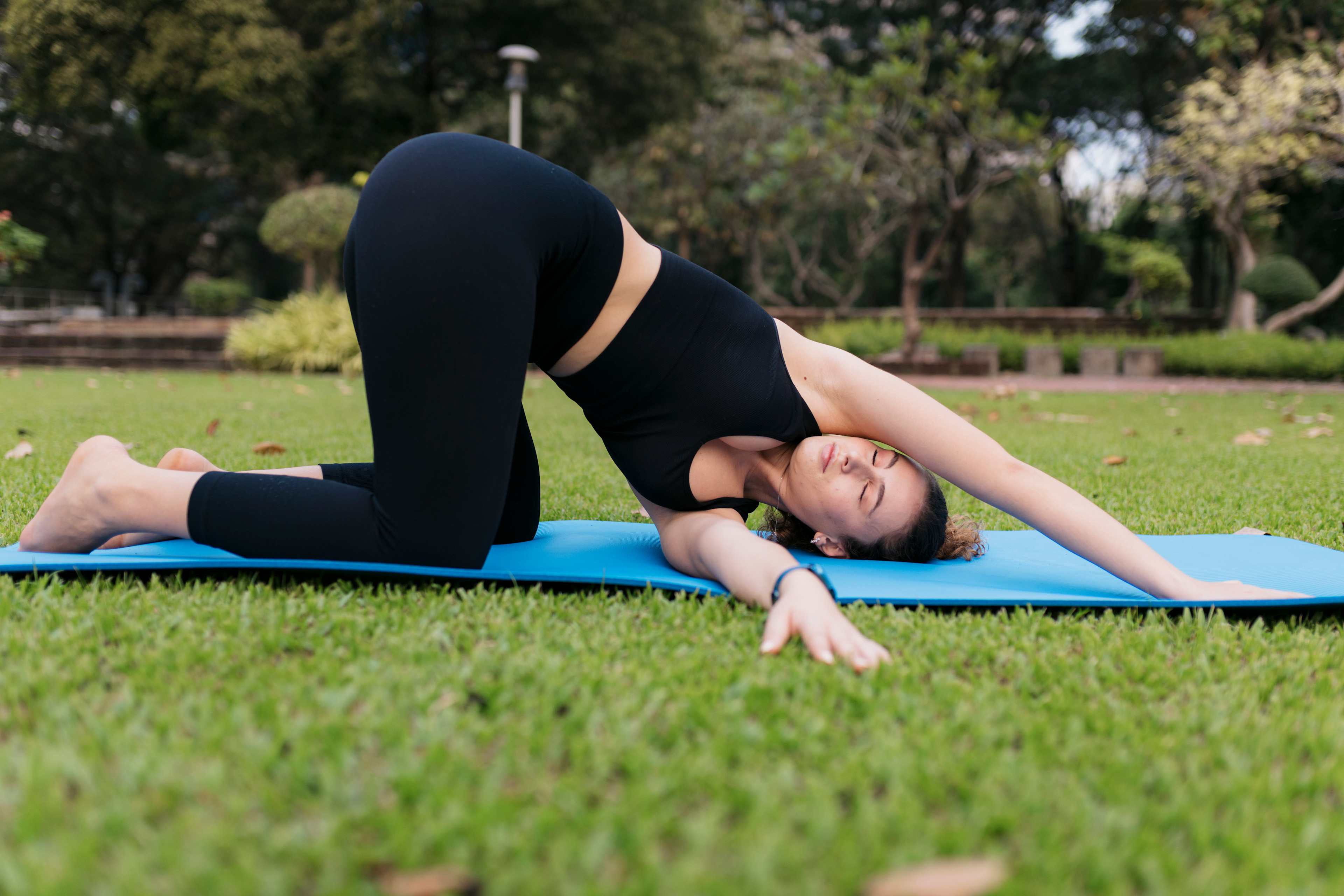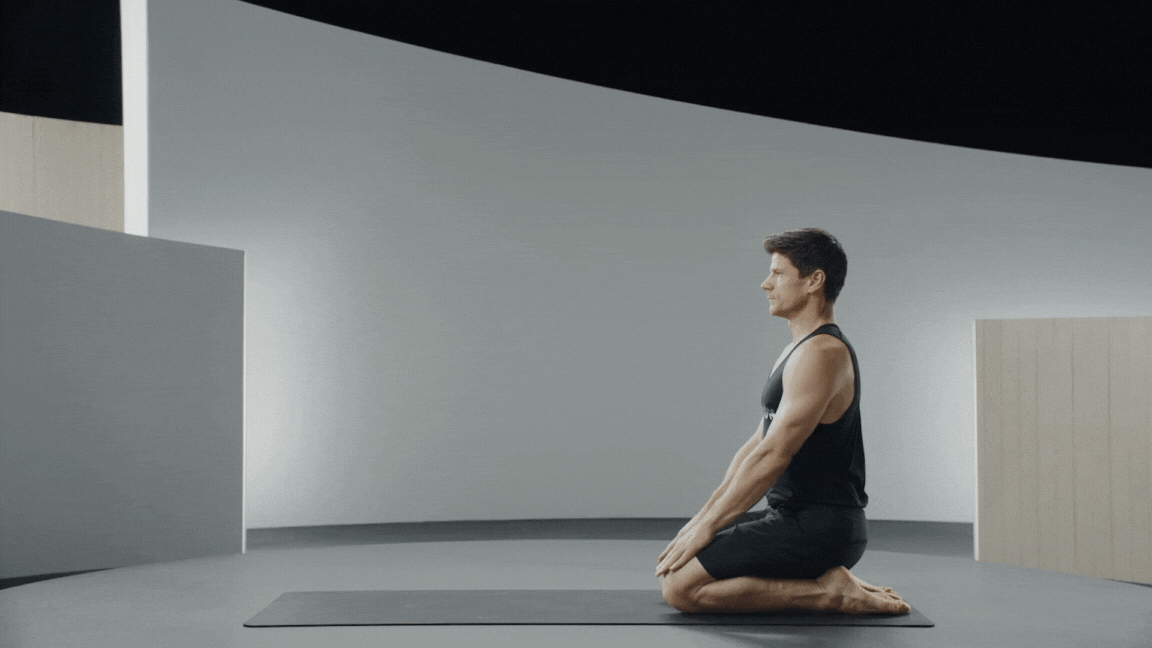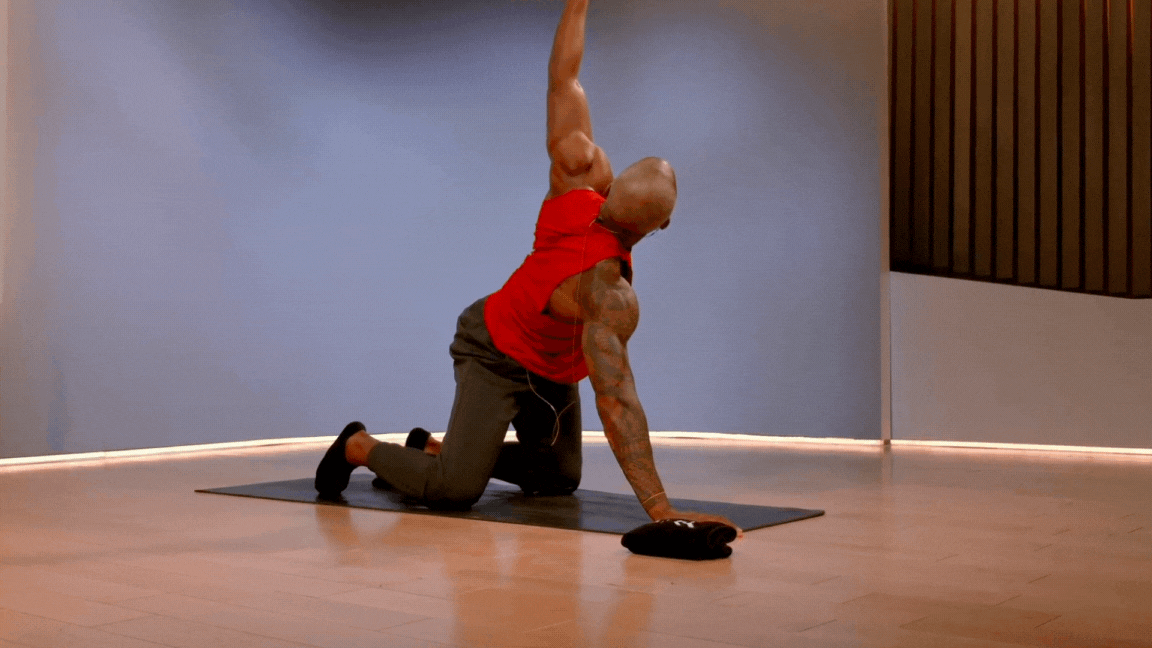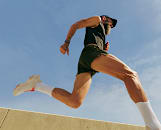
Melt Away Upper Body Tension with the Thread the Needle Stretch
This back and shoulder stretch unlocks thoracic spinal mobility—and feels so, so good.
By Erin Bunch •
What Is the Thread the Needle Stretch?
The Benefits of Thread the Needle
Why Thread the Needle Is So Good at Relieving Tension
How to Do Thread the Needle
Thread the Needle Modifications
When to Do the Thread the Needle Stretch
Few exercises feel as juicy as the thread the needle stretch, a simple yet incredibly effective movement known for its ability to melt away tension. “The thread the needle stretch is 100 percent one of my favorite stretches, especially as a person whose spinal mobility varies from day to day,” says Peloton instructor Matty Maggiacomo.
Discover more ways to reach your goals with Peloton
While most stretches provide some relief, thread the needle is especially satisfying because it targets areas of the body that commonly store tension—including the neck, shoulders, and back—while also, as Matty alludes to above, offering a gentle release for the spine. It’s a great go-to move for loosening up after sitting, traveling, or sleeping, or for easing post-workout soreness. Bottom line: it’s the kind of stretch you’ll want to keep in your daily routine—whether first thing in the morning, before or after a sweat sesh, or at the end of a long day on the move.
New to thread the needle, need a refresher, or want tips for working it into your routine? We’ve got you covered. Below, everything you need to know to execute this stretch safely and effectively.

Peloton App
Access thousands of classes with no equipment needed.
What Is the Thread the Needle Stretch?
Thread the needle is a gentle, twisting stretch performed from a tabletop (i.e., hands-and-knees) position. It involves sliding one arm underneath your body while lowering your shoulder and ear toward the floor, creating a deep rotation through the thoracic spine—the middle part of your back, from just below the neck to the bottom of your ribs.
This movement improves mobility in the thoracic spine, which helps to increase range of motion, improve posture, and enhance flexibility, according to Matty. “The thread the needle stretch also helps release tension in the shoulders and stretches the upper back,” he says.
Which Muscles Are Stretched By Thread the Needle?
The thread the needle stretch specifically targets several key muscle groups that play a crucial role in both movement and posture, Matty says. These include:
Rhomboids: Located in the upper back, between the spine and shoulder blades, the rhomboids are responsible for retracting the shoulder blades. This movement is essential for pulling the arms and shoulders back.
Trapezius (Traps): The trapezius muscles are two large, triangular muscles that span from the base of the skull, across the shoulders, and down the back on either side of your spine. They play a key role in moving the shoulder blades and supporting the head, neck, and spine.
Deltoids: The deltoids are the group of muscles on the outside of your shoulders, and are responsible for raising the arm and stabilizing the shoulder joint.
Latissimus Dorsi (Lats): The lats are large muscles that span from the middle of the back, beneath the shoulder blades, down to the lower back. These muscles help stabilize the spine and assist in movements such as climbing and pulling.
Erector Spinae: Running vertically along the spine, the erector spinae muscles help maintain posture and spinal alignment. Tightness in these muscles can limit mobility and lead to back discomfort.
The Benefits of Thread the Needle
The thread the needle stretch isn’t just great because it feels like an upper-body massage. By targeting all the muscles mentioned above, this super-stretch delivers a range of benefits.
“Specifically, it improves spinal mobility, allowing you to move through your day without restriction in your upper body,” Matty says. For those who don’t know, spinal mobility refers to your spine’s ability to move freely through its full range of motion without pain or stiffness. As Matty notes earlier, your spinal mobility can vary from day to day—it’s influenced by factors like posture, physical activity, or the amount of time spent sitting. Mobility can also change with age, which is why keeping this stretch in your routine long-term can help you stay comfortably active.
Thread the needle also boosts shoulder mobility and helps offset upper back pain by relieving tension in the back and shoulders—two areas especially prone to tightness, Matty says. Additionally, it offers a serious benefit to all those who hold sedentary computer jobs. “It’s great for improving posture,” he adds.
Why Thread the Needle Is So Good at Relieving Tension
If you’ve never tried thread the needle before, get ready for an unparalleled release. According to Matty, this stretch feels so good because it directly addresses a common pain point. “A lot of people have restricted movement in their thoracic spine, or mid-back, mainly because of lifestyle—aka prolonged sitting or repetitive movements,” he says. “The thread the needle stretch actively engages these muscles and, in turn, promotes blood flow and relaxation. It also creates a gentle decompression, which tends to be synonymous with relief!”

How to Do Thread the Needle
Thread the needle is a simple move, but it’s important to do it properly to avoid irritating your back or neck. Here, Matty shares a step-by-step guide for performing the stretch correctly.
Start in a tabletop position on your hands and knees. Your hands should be directly beneath your shoulders or a few inches in front of them, and your knees underneath your hips.
Inhale and reach your right hand toward the ceiling, rotating your chest open to the right. Try to keep your hips square.
Exhale and thread your right hand between your left arm and left leg, underneath your left armpit, with your right palm facing up. Slowly lowering your right shoulder and the side of your head to the floor, rotating your chest to the left.
Hold this position for 20-30 seconds, breathing deeply. Keep your left hand planted on the floor for support or move it away from your body, coming onto your fingertips (as shown above), to deepen the stretch and place more weight in your right shoulder.
To come out of the stretch, push into your left palm to lift your right shoulder off the floor. Reverse the movement, reaching your right hand toward the ceiling and rotating your chest open to the right. Then, return to tabletop position and repeat the movement on the other side.
Thread the Needle Modifications
If your bottom shoulder doesn’t quite reach the floor in thread the needle, Matty recommends placing a yoga block underneath it for extra support.
You can also try a seated version of thread the needle, which is gentler on the body and a great option if you’re new to stretching, want more control, or the floor isn’t accessible to you. To do seated thread the needle, sit in a chair with your feet flat on the floor, hip-width distance apart. Place your left hand on your left knee, and reach your right arm through the hole you made with your left arm, under your left armpit, gently twisting your chest to the left. Hold the stretch for the same amount of time on both sides.
“Go easy and keep the movements ‘patient,’ as I say,” Matty says. “Don’t press into pain!” In other words: if you're feeling tight, sore, or just learning the movement, take it slow and honor your current range of motion.

When to Do the Thread the Needle Stretch
One of the best things about the thread the needle stretch is its versatility. “Use this stretch at any time of day, and certainly after a workout,” Matty says. It can also fit seamlessly into a workout warm-up when you perform thread the needle as a dynamic stretch—i.e., continuing to move through the full range of motion, but not stopping to hold one position, as demonstrated above by Peloton instructor Adrian Williams. It can also feel amazing after a long day of sitting or as a stretch before bed.
Whether you need a quick tension release or a deep stretch, thread the needle is a great way to reset your back, shoulders, neck, and spine anytime you need. Plus, it requires little to no equipment—a mat or yoga block is completely optional—making it incredibly accessible.
That said, there are some important considerations to keep in mind, Matty says. If you have severe shoulder injuries or lower back pain, it’s best to skip deep spinal twists like the thread the needle—or at the very least, consult with a physician to ensure it’s safe for you. Matty also points out that pregnant women in later trimesters might find the deep twist uncomfortable, and it’s best to avoid any pressure on the abdomen during this time. As with any movement, it’s important to listen to your body and adjust accordingly.
Want more upper body stretches? Cue up a stretching, mobility, or yoga class on the Peloton App, which offers special sessions dedicated to Spinal Mobility, Shoulder Mobility, Yoga Twists, and more.
This content is for informational and educational purposes only and does not constitute individualized advice. It is not intended to replace professional medical evaluation, diagnosis, or treatment. Seek the advice of your physician for questions you may have regarding your health or a medical condition. If you are having a medical emergency, call your physician or 911 immediately.
Level up your inbox.
Subscribe for a weekly dose of fitness, plus the latest promos, launches, and events.
By providing your email address, you agree to receive marketing communications from Peloton.
For more about how we use your information, see our Privacy Policy.













